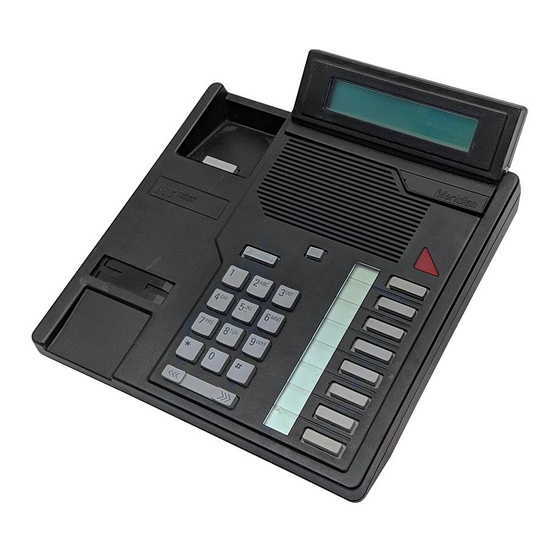
Nortel Meridian 1 Manual
Hide thumbs
Also See for Meridian 1:
- Manual (1121 pages) ,
- Planning and installation manual (612 pages) ,
- Planning, installation and operating instructions (556 pages)
Table of Contents
Advertisement
Quick Links
Meridian 1
Intelligent peripheral equipment circuit
cards for New Zealand
Option 11 - Description and Installation
Document Number: Supplement to 553-3011-210
Document Release: Provisional 1.3
Date: July 1993
Year Publish FCC TM
© 1992, 1993
All rights reserved
Printed in Canada
Information is subject to change without notice. Northern Telecom reserves the right to make changes in design
or components as progress in engineering and manufacturing may warrant. This equipment has been tested
and found to comply with the limits for a Class A digital device pursuant to Part 15 of the FCC rules.
SL-1 and Meridian 1 are trademarks of Northern Telecom.
Intelligent peripheral equipment circuit cards for New Zealand
Option 11 - Description and Instal-
Advertisement
Table of Contents












Need help?
Do you have a question about the Meridian 1 and is the answer not in the manual?
Questions and answers